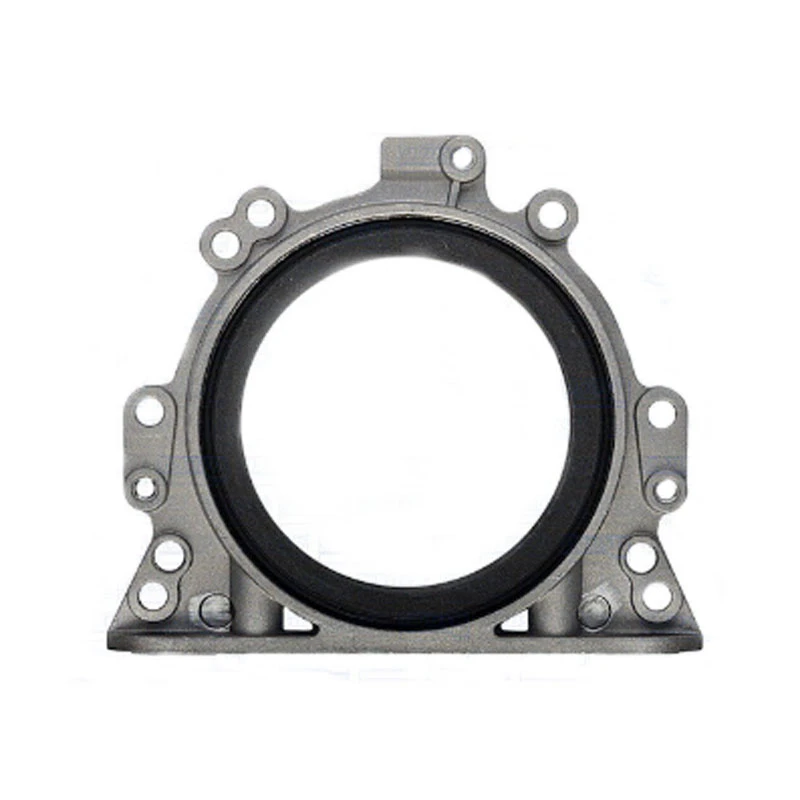Different Varieties of Oil Seals and Their Applications in Industrial Use
Types of Oil Seals A Comprehensive Guide
Oil seals are critical components in machinery and engines, designed to prevent the leakage of lubricants and protect internal components from contaminants. Understanding the various types of oil seals can help in selecting the appropriate seal for specific applications, thereby ensuring efficiency and longevity. In this article, we will explore the different types of oil seals, their construction, and their applications.
1. Rotary Oil Seals
Rotary oil seals, also known as radial oil seals, are the most common type used in rotating components. They consist of a rubber or elastomeric sealing element fitted into a metal casing. The sealing lip is designed to make contact with a rotating shaft, creating a tight seal that prevents oil leakage while allowing for some axial movement. Rotary oil seals are widely used in automotive applications, such as in engines and transmissions, as well as in industrial machinery.
2. Static Oil Seals
Static oil seals are used in applications where there is no relative motion between the sealing surfaces. These seals are typically made from materials like rubber, polymer, or metal and are designed to prevent the ingress or egress of fluids. Commonly found in flanged joints or as O-rings, static oil seals are crucial in hydraulic systems and in various machinery to maintain pressure and prevent leakage.
3. V-Rings
V-rings are unique oil seals that can be used in conjunction with rotary shaft applications. They are installed on the shaft and act as a flexible seal, allowing for effective sealing against contaminants while accommodating radial and axial movements. The design of V-rings enables them to maintain contact with the shaft, creating a barrier against dust, dirt, and moisture. These seals are often used in agricultural machinery and other heavy-duty applications.
types of oil seals

4. Lip Seals
Lip seals are another prevalent type of oil seal, composed of a sealing lip that makes contact with the shaft. This type of seal is engineered to provide exceptional sealing capabilities against both contaminants and fluids. The design can vary, with single or double lip configurations, which offer versatility depending on the application. Lip seals are commonly used in automotive engines, gearboxes, and hydraulic cylinders due to their reliability and effectiveness in preventing leakage.
5. U-Cups
U-cups, also known as U-seals, are designed primarily for static and dynamic sealing applications. Their unique U-shape allows for enhanced sealing performance, particularly under high pressures. U-cups can be made from elastomeric materials or thermoplastics, offering a range of chemical resistance and compatibility. These seals are frequently utilized in hydraulic actuators and pneumatic systems where performance under pressure is crucial.
6. O-Rings
O-rings are perhaps the most recognizable type of oil seal. These circular seals can be made from various materials, including rubber, silicone, and polyurethane, and are used in both static and dynamic applications. O-rings are versatile and are commonly found in connectors, hoses, and various machinery components. Their ability to form a tight seal between two parts makes them essential in preventing leaks and maintaining pressure.
Conclusion
Choosing the right oil seal for a specific application is paramount in safeguarding machinery and ensuring operational integrity. With an assortment of options available, including rotary oil seals, static oil seals, V-rings, lip seals, U-cups, and O-rings, it is essential to consider factors such as the operating environment, fluid type, and mechanical conditions when selecting a seal. By understanding the characteristics and applications of these various oil seals, manufacturers and engineers can ensure optimal performance and prevent costly leaks and failures in their systems. Remember, a well-chosen oil seal not only extends the life of components but also enhances overall efficiency in machinery operation.
-
Simplifying Oil Changes: A Comprehensive Guide to Oil Drain Plugs and Their Variants
News Aug.04,2025
-
Mastering Oil Drain Maintenance: Solutions for Stripped, Worn, and Upgraded Oil Plugs
News Aug.04,2025
-
Fixing Oil Pan Plug Issues: Leaks, Stripped Nuts, and the Right Replacement Solutions
News Aug.04,2025
-
Everything You Need to Know About Oil Drain Plugs: Sizes, Fixes, and Upgrades
News Aug.04,2025
-
Choosing the Right Oil Drain Plug: A Guide to Sizes, Materials, and Drain Innovations
News Aug.04,2025
-
A Complete Guide to Automotive Drain Plugs: Types, Problems, and Innovative Solutions
News Aug.04,2025
-
The Ultimate Guide to Car Repair Kits: Tools and Essentials Every Driver Should Own
News Aug.01,2025
Products categories















